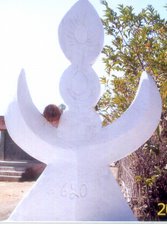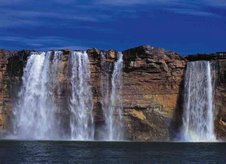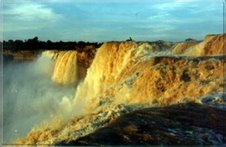For the past 60 days or so, since about the end of June, the people of Kashmir have been free. Free in the most profound sense. They have shrugged off the terror of living their lives in the gun-sights of half a million heavily armed soldiers, in the most densely militarised zone in the world.
After 18 years of administering a military occupation, the Indian government's worst nightmare has come true. Having declared that the militant movement has been crushed, it is now faced with a non-violent mass protest, but not the kind it knows how to manage. This one is nourished by people's memory of years of repression in which tens of thousands have been killed, thousands have been "disappeared", hundreds of thousands tortured, injured, and humiliated. That kind of rage, once it finds utterance, cannot easily be tamed, rebottled and sent back to where it came from.
A sudden twist of fate, an ill-conceived move over the transfer of 100 acres of state forest land to the Amarnath Shrine Board (which manages the annual Hindu pilgrimage to a cave deep in the Kashmir Himalayas) suddenly became the equivalent of tossing a lit match into a barrel of petrol. Until 1989 the Amarnath pilgrimage used to attract about 20,000 people who travelled to the Amarnath cave over a period of about two weeks. In 1990, when the overtly Islamist militant uprising in the valley coincided with the spread of virulent Hindu nationalism (Hindutva) in the Indian plains, the number of pilgrims began to increase exponentially. By 2008 more than 500,000 pilgrims visited the Amarnath cave, in large groups, their passage often sponsored by Indian business houses. To many people in the valley this dramatic increase in numbers was seen as an aggressive political statement by an increasingly Hindu-fundamentalist Indian state. Rightly or wrongly, the land transfer was viewed as the thin edge of the wedge. It triggered an apprehension that it was the beginning of an elaborate plan to build Israeli-style settlements, and change the demography of the valley.
FULL ARTICLE







No comments:
Post a Comment